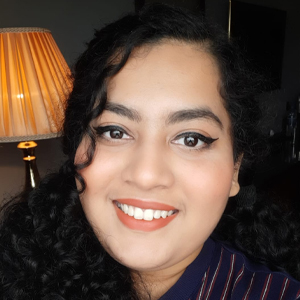Cows offer clues to treat human infertility
Infertility is a prevalent problem. Would-be parents struggling to conceive usually try in vitro fertilization, or IVF treatments, in which medical personnel remove an egg from an ovary, fertilize it with sperm in a laboratory and then place the fertilized egg, or blastocyst, in the uterus to grow and develop.
IVF has a low success rate, which physicians and researchers don’t completely understand. In many ways, the lab environment where the egg grows is often not optimal, leading to fewer viable blastocysts that can result in successful pregnancies. Patients often have to repeat the procedure multiple times before they conceive successfully.

The estrous cycle of cows is equivalent to the human menstrual cycle and is similar in structure and function. Cows also experience infertility, with a corresponding lack of knowledge regarding their estrous cycle. However, researchers can study cows more easily than humans, and if they solve infertility in cows, this could serve as a model for treating human infertility.
Researching cow infertility also benefits the dairy industry. Infertile cows are often sent to slaughterhouses, and farmers lose money.
Johanna Piibor, a veterinarian and researcher at the Estonian University of Life Sciences, has had a passion for cattle ever since she began studying veterinary medicine.
“I often observed the lack of diagnostic and prognostic protocols in treating cow infertility,” Piibor said, “and this motivated me to contribute to solving this issue by understanding the science of the estrous cycle.”
To help gain this understanding, Piibor and her colleagues decided to observe the changes in bovine uterine fluid extracellular vesicles, or UF-EVs, at different time points of the estrous cycle.
EVs are heterogeneous particles secreted by cells that carry biomolecules such as proteins, nucleic acids and metabolites and help cells communicate over long distances. The internal content of EVs changes depending on the health of the organism and can influence the response of the cells they deliver their messages to.
UF-EVs contain proteins that are essential in mechanisms of endometrial development. Piibor’s team wanted to see whether these EVs are also important for embryo development.
They took samples of uterine fluid from cows at different phases of the estrous cycle. These cows were synchronized with hormones to induce ovulation at the same time. The researchers isolated EVs from the uterine fluid and observed differences in EV content at each phase. They infused blastocysts in IVF cultures with EVs from different phases of the estrous cycle and observed their effect on the growth of blastocysts.
In a recent article in Molecular & Cellular Proteomics, Piibor and colleagues reported that changes in the UF-EV proteome during the estrous cycle had an impact on blastocyst growth. EVs from the luteal phase of the cycle, when hormones that maintain pregnancy such as progesterone are highly concentrated, significantly increased the rate of blastocyst production. This shows that uterine fluid changes can affect IVF outcomes in cows — and provides clues to increase human IVF success rates.
Piibor’s next step is to compare UF-EVs from cows with clinical endometritis, a uterine inflammation, with those from healthy cows.
Piibor said EV research is a novel field and a challenging aspect is isolating the EVs from the fluid since there is still no agreed-upon isolation method and the technology is not sensitive enough to detect sufficient EVs.
“Optimizing the isolation protocol and developing ultrasensitive technology would allow significant leaps in the field,” she said, “and hopefully will save vast amounts of time in conducting EV research in the future.”
Enjoy reading ASBMB Today?
Become a member to receive the print edition four times a year and the digital edition monthly.
Learn moreGet the latest from ASBMB Today
Enter your email address, and we’ll send you a weekly email with recent articles, interviews and more.
Latest in Science
Science highlights or most popular articles

Exploring the link between lipids and longevity
Meng Wang will present her work on metabolism and aging at the ASBMB Annual Meeting, March 7-10, just outside of Washington, D.C.

Defining a ‘crucial gatekeeper’ of lipid metabolism
George Carman receives the Herbert Tabor Research Award at the ASBMB Annual Meeting, March 7–10, just outside of Washington, D.C.

The science of staying strong
Muscles power every movement, but they also tell the story of aging itself. Scientists are uncovering how strength fades, why some species resist it and what lifestyle and molecular clues could help preserve muscle health for life.

Bacteriophage protein could make queso fresco safer
Researchers characterized the structure and function of PlyP100, a bacteriophage protein that shows promise as a food-safe antimicrobial for preventing Listeria monocytogenes growth in fresh cheeses.

Building the blueprint to block HIV
Wesley Sundquist will present his work on the HIV capsid and revolutionary drug, Lenacapavir, at the ASBMB Annual Meeting, March 7–10, in Maryland.

Gut microbes hijack cancer pathway in high-fat diets
Researchers at the Feinstein Institutes for Medical Research found that a high-fat diet increases ammonia-producing bacteria in the gut microbiome of mice, which in turn disrupts TGF-β signaling and promotes colorectal cancer.

